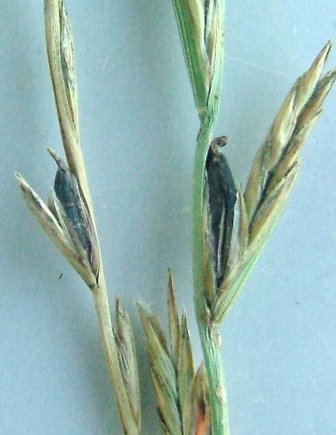Ergot
Ergot is caused by the fungus Claviceps purpurea. It occurs in summer when ergots (or sclerotia) develop on seed heads.
Species affected
Many grasses, including ryegrass, paspalum and brome species.
Identification
Ergots are dark purplish-black, replacing a seed in the seed head. They are usually larger than seed, and protrude from the floret.
Spread
Ergots drop to the ground and lie dormant through winter. In spring they germinate, producing spores, to infect developing florets. Infected florets produce a sticky mass of spores called ‘honey dew’ that attracts insects, which can spread infection. It is also spread in infested hay.
Prevention and management
Ergot contains alkaloids, which if ingested in large quantities, may cause heat stress, lameness and ill-health.
Graze or top pastures to minimise seed head and ergot problems. If ergots are visible, top the pasture.

Ergots (sclerotia) developing in a ryegrass seed head.

